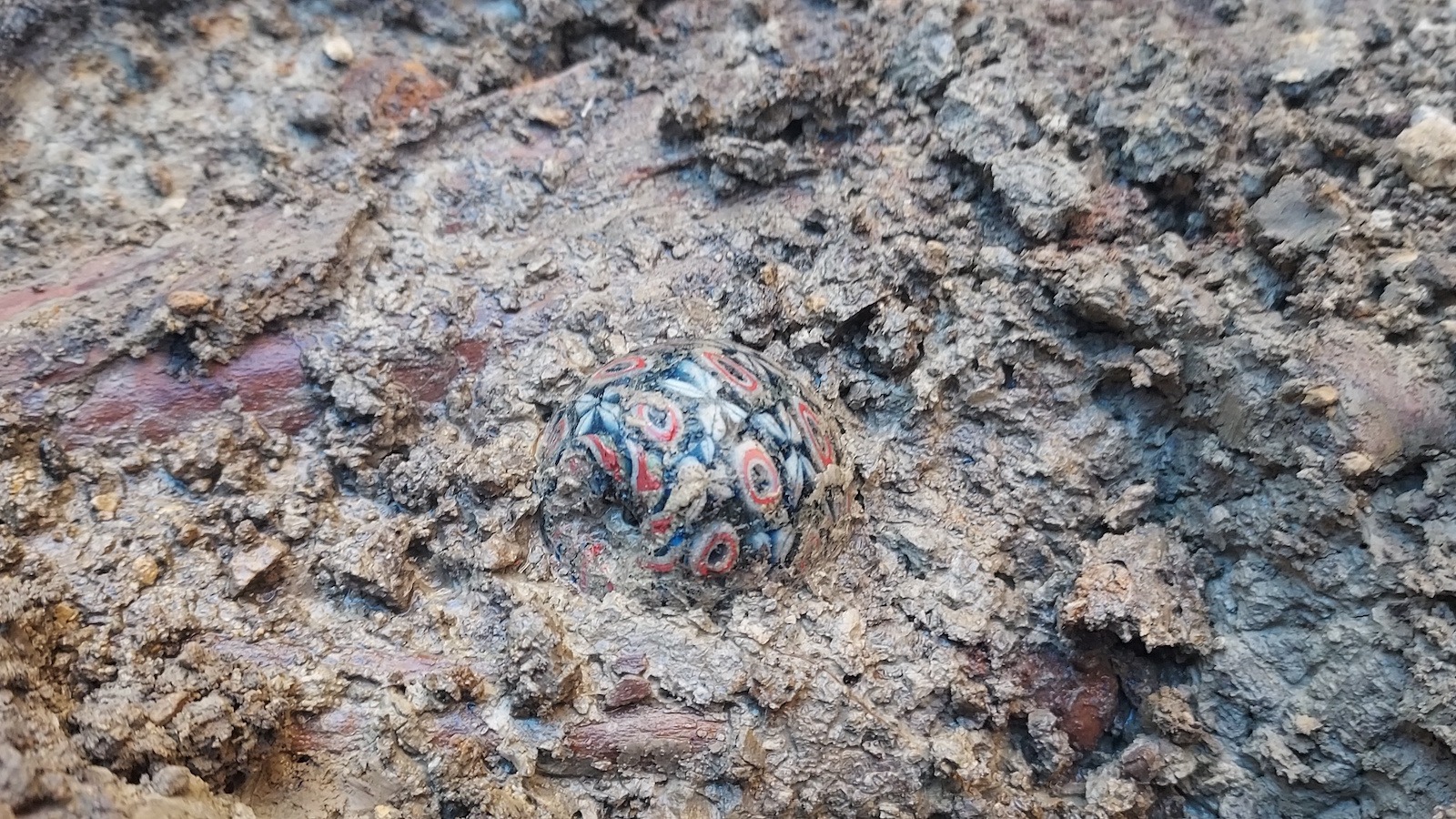Early-medieval woman was buried with a rare item: a metal folding chair
The "special gift" was one of many grave goods.

Coins, weaponry, jewels and other valuables are often found in the ancient burials of prominent people, but archaeologists recently discovered a truly rare grave good: a metal folding chair.
Constructed of an iron frame, the medieval chair measures approximately 28 by 18 inches (70 by 45 centimeters) when folded and was found by a team of archaeologists from the Bavarian State Office for Monument Protection (BLfD) last month in Endsee, a village in southeastern Germany.
Hubert Fehr, an archaeologist with the BLfD, told Live Science that the chair dates to approximately A.D. 600 and that it was associated with the burial of a woman who died in her 40s or 50s.
"While it's too early after the excavation for us to know the identity of the woman," Fehr said, "we do know that she was of high social status, as evidenced by the grave goods found at the burial site."
Related: Mystery behind medieval 'bed burials' in UK possibly solved
Although only the metal portion of the chair has survived, it's possible that it was built using other materials, such as wood and leather, he said. An X-ray of the chair could reveal additional details about its construction.
"The iron of the chair is covered with corrosion layers, and sometimes within those layers you'll find parts of wood and leather that have survived," he said.
Get the world’s most fascinating discoveries delivered straight to your inbox.
In general, chair burials are incredibly rare, with only one other known burial found in Germany; across Europe, 29 early-medieval grave sites have burials with chairs, but just six are built of iron. Since these seats were often constructed of organic materials such as wood, ivory, leather or fabric, the only surviving elements are often the nails holding them together or the metal frames.
Because of the chairs' rarity and symbolism, researchers consider these grave goods "special gifts," according to a translated statement.
"[The folding chair] had a very specific symbolic meaning during antiquity and was used as an insignia or sign of power for bishops, priests, officers and others with high social ranking, which were often men in patriarchal Germany," Fehr said. "Astonishingly, most of the chair burials that have been found are related to female graves, which shows that women were also linked to this general language of symbols related to signs of power."
In addition to the chair, the site contained a bevy of other grave goods, including a pearl necklace that included small, multicolored glass beads draped around the skeleton's neck; a belt with multiple brooches; a spindle whorl used to hand-spin yarn; and an animal bone, possibly from the rib of a cow, that likely served as a meat offering.
Lastly, a large glass bead with a millefiori pattern, meaning it was speckled with different colors of glass that were fused together, helped archaeologists estimate the date of the burial.
"Most beads were made of glass during that time period, but the styles changed rapidly in respect to their color and shape," he said. "Yellow was primarily used around A.D. 600."
Researchers also discovered the burial of a man next to the woman. Although the man's identity is also unknown, he was buried with a full set of weapons, including a lance, shield and spade; a leg comb most likely used for grooming sheep; and a waist belt with a bronze buckle and belt pouch, according to the statement.
The researchers plan to X-ray the chair soon to see if it reveals any clues to the woman's identity and the chair's construction.
Originally published on Live Science.
Jennifer Nalewicki is former Live Science staff writer and Salt Lake City-based journalist whose work has been featured in The New York Times, Smithsonian Magazine, Scientific American, Popular Mechanics and more. She covers several science topics from planet Earth to paleontology and archaeology to health and culture. Prior to freelancing, Jennifer held an Editor role at Time Inc. Jennifer has a bachelor's degree in Journalism from The University of Texas at Austin.



